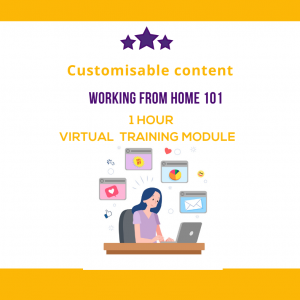
According to findings from the High-Impact Learning Organization study by Bersin by Deloitte, employees find it most difficult to learn, NOT because there isn’t enough content, but because there is TOO MUCH of it, and they cannot find what is valuable.
Let’s face it, access to information is everywhere we turn. According to IBM, 90% of the data in the world today has been created in the last two years. Every day, we create 2.5 quintillion bytes of data. So much that 90% of the data in the world today has been created in the last two years alone.
Holy crap Batman, that is a lot of information. It is not necessarily correct, relevant, or even good information. But information, all the same.
What’s this got to do with learning?
According to the IDC, the average employee spends about 9.5 hours every week just hunting around for information. If learning and development or corporate training is a conduit to enabling employees to be competency with relevant and timely skills, the way professional development is delivered needs to change.
Simply, not all learning needs to occur in a formal environment.
So, how can this be achieved? The answer to creating a learning and development strategy that includes curation as a foundation element. By curating content, you help willing learners get access to valuable information that is worth their time and attention.
What does that even mean? What does a content curator do?
A content curator is someone who continually finds, groups, organises and shares the best and most relevant content on a specific issue online.
Just like the curator of a museum, content curators responsible for sifting, sorting, and sharing what they consider to be the best content for their audience. They are responsible for keeping it relevant, fresh and engaging, so learners keep coming back.
“Curation is the art/science of identifying the best information for the organization and providing context and order to it. – Bersin by Deloitte”
What’s it got to do with learning?
The last two decades of online learning have been dominated by courses. You take them, pass them, and you’re done. If you have a particularly engaged manager, they may follow up the learning event, and determine how you will apply the new information back into the workplace. Whilst this is still a relevant method of learning, as information and insights are shared, new skills gained. For some subjects and topics, where foundation skills are required, and registration of understanding or competency is required, courses are a great way of doing that.
But the problem is what’s next? Some courses can get outdated fast. New content is published in our niches and topics every day. The best course on say, social media, is out of date tomorrow. If you don’t keep up with the latest content in your specialist field, as Charles Jennings says, “you will become irrelevant.”
Everyone knows how important it is to stay smart and keep learning, otherwise our skills deteriorate. However, for many, the main supply mode in L&D is still courses. Increasingly workers are time-poor, and need to achieve more with fewer resources. As much as they want continuous development, formal learning is not necessarily the format that they want. This is backed up by the “Towards Maturity report.”
The Towards Maturity Benchmark Report from 2016 showed that
- 60% say they learn more from external sources than formal courses
- 70% find external web sources essential or very useful (vs. 47% for elearning)
- Rising to 81% for senior leaders
This means that people are looking beyond the course anyway. They are looking for ways to embed learning that is relevant and timely.

Today’s effective learning and development team need to be agile. To do this, a review of current approaches and content needs to take place.
- What content has a stable shelf life?
- Should the approach of technical training be different from the approach of soft skills development?
- When creating content for the workplace, consider what role content curation will play.
- Will this be used as a tool to embed or refresh knowledge?
- How will it be accessed?
- Can employees add content for peers to access?
- Who will you disseminate the content?
- How can you empower your learners to take ownership of their professional learning and development?
This is a significant shift for some learning and development teams to work. A learning course may be part of the solution, however, curation, enables people of all levels to take ownership of their professional learning and development. Formal courses only account for about 10% of how we learn. The rest of our insight comes through informal and social learning from each other.
Instead of making courses or engaging external companies to deliver their program, the key to success is to make it easier for people to find and use external resources. Content curators that help teams stay up to date can add tremendous value.
What are the benefits of content curation?
- Curated content, if professionally managed, remains relevant over time. There’s long term value in hand-picking the very best articles on sales, leadership, or negotiation skills from authoritative sources. They become the new reference sites and knowledge bases.
- You are saving people time. Towards Maturity found that two-thirds of leaders say that they struggle with finding the time to learn, and 44% cannot find what they need, despite having the desire to do this. As mentioned earlier, IDC estimates that the average knowledge worker spends 9.5 hours a week searching for information. If you could reduce that by just 10%, what would that mean for efficiency and productivity in your organisation?
- You are super responsive. If a sales team wants a briefing on the latest trends in Nanotechnology or an overview of a new prospect or a regular set of insights on pricing, effective curators with the right tools can respond rapidly.
- You are helping people be self-directed. 88% of learners want to take charge of their own learning experience. Curated content is self-service. It is not an enforced linear experience like a course, you’re serving up relevant content for people to tap into. Working with people managers as to how this can be accessed and benefits will be key, or your team will risk falling into the “What do learning and development do all day?”
- You are encouraging sharing and working out loud. The number one way we learn is through knowledge sharing in small focused groups. Great curators do not present themselves as experts who have the final say on a topic. They start the conversation by saying why an article is relevant and invite people to comment. Curation is the engine behind helping teams to share insights and work out loud.
- You are innovating. Learning teams need new approaches to help their customers deal with information overload and increased competitive pressure. If you could say to your internal customer that you can help their teams stay up to date on any topic, in less than 10 minutes a day, with no need for a course, would they keep listening?
What is your approach to the curation of learning? How do you engage your stakeholders in the curation process?
Let us know in the comments below.
Facilitated Training
Targeted, professional development courses enable you to deliver effective training sessions that get the key message across and retain participant involvement.
- Save hours of research and development time. We have done all the hard work so you can focus on the training delivery
- Own complete rights to edit, copy, and reuse the training materials. You can even brand it with your business logo and name.
- Download all training courses and courseware packages immediately in their source files.
Each training course includes:
- Detailed Trainers / Facilitator Guide
- Targeted explainer video
- Learner Workbooks
- Adult centred training activities
- A self-paced learning plan for learning application back in the workplace
- Learner Attendance Certificate
- Attendance record
- Training evaluation sheet
Facilitated Training has the solution that you need. Editable training materials that can be used again and again. Insert your company logo, add in case studies or examples from your workplace, or train using the quality training materials, as is.
Facilitated Training is your one-stop-shop for world-class, customisable training and professional development resources.
Facilitated Training offers training and organisational development resources to facilitators, trainers, coaches, HR managers and individuals.
Specialising in customisable leadership and management skills, Facilitated Training features a wide variety of products, including Training resources, Professional development courses, assessments, ebooks, videos and more.
Click here for customisable training materials that will assist your workplace in managing resources and output.
www.facilitatedtraining.com
About the author: Colleen Condon
Colleen likes to keep things creative in all that she does, often using marshmallows as a source of inspiration.
Everyone knows that ongoing learning is essential for both personal and professional success and yet, for many, this means hours of attending dead boring training or completing’ losing the will to live’ eLearning modules. Colleen’s mission is to end tedious professional development while ensuring targeted outcomes for learners and businesses.
Colleen has honed her skills over the last 20 years across multiple industries and locations. Her previous role saw her overseeing the training and development needs of over 60, 000 employees across 13 countries in the APAC region. This enabled her to hone skills that celebrated diversity and understanding human commonality through learning, and that in the absence of a common language, flip charts and coloured markers helped her to overcome most challenging situations.
After taking a ‘go away package’, in 2019, Colleen founded her own business, Facilitated Training, harnessing her global learning experiences and sharing them through ready to use learning resources, specialising in leadership, mentoring, guest speaking, creative problem solving, filling the gap of high quality, customisable training resources and tools.

